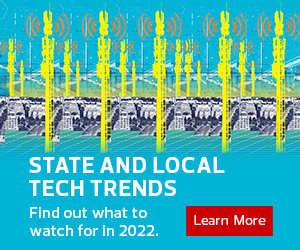Agencies Look to Modernize Network Infrastructure
EIS, the transformative contract vehicle that federal agencies can leverage to modernize their IT/enterprise/network infrastructure, replaces GSA’s legacy Networx Universal and Enterprise contracts as well as the GSA regional local service agreements for government telecommunications and infrastructure solutions. GSA is under a Congressional mandate to provide telecommunications services for the federal government.
To date, Verizon has been awarded more than 40 percent of EIS task orders that have already been funded by the government.
“We expect continued momentum in the federal government across the EIS contract vehicle, allowing companies like Verizon to help federal agencies modernize current legacy IT infrastructure,” says John Harris, executive director of Verizon Public Sector. “We also anticipate additional 5G announcements from federal agencies like the Department of Defense, where leaders are focused on implementing the department’s 5G strategy.”
EXPLORE: Follow these best practices for network modernization from a CDW expert.
Kyle Michl, chief innovation officer for Accenture Federal Services, says that in a survey of federal executives 87 percent agree that organization will shift from bring-your-own device to a bring-your-own environment concept, “which means you’ve got to provide and bring what you need to be successful in those environments,” whether you’re working remotely, in the office, or a mix of the two.
“I think that’s an important mindset shift,” he says.
EIS also allows federal agencies to take advantage of all the transformational technologies and services that Verizon delivers, including project management, professional services, network/security services and managed infrastructure expertise, Harris says.
Earlier this year, Verizon announced EIS awards with the Air National Guard, the Labor Department, Naval District Washington and Energy Department. The Department of Veterans Affairs and Department of Homeland Security have announced task order awards with AT&T for network modernization under EIS.
Click the banner to get access to customized networking content by becoming an Insider,












